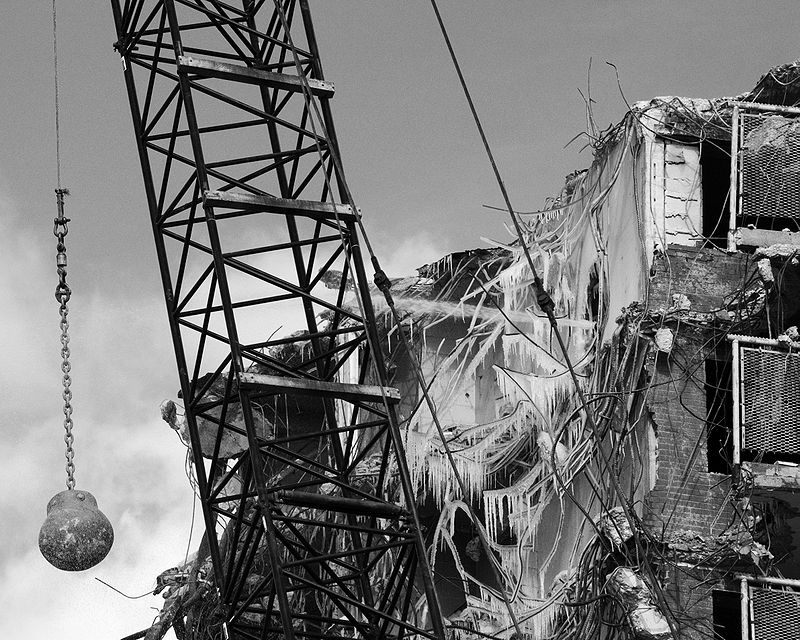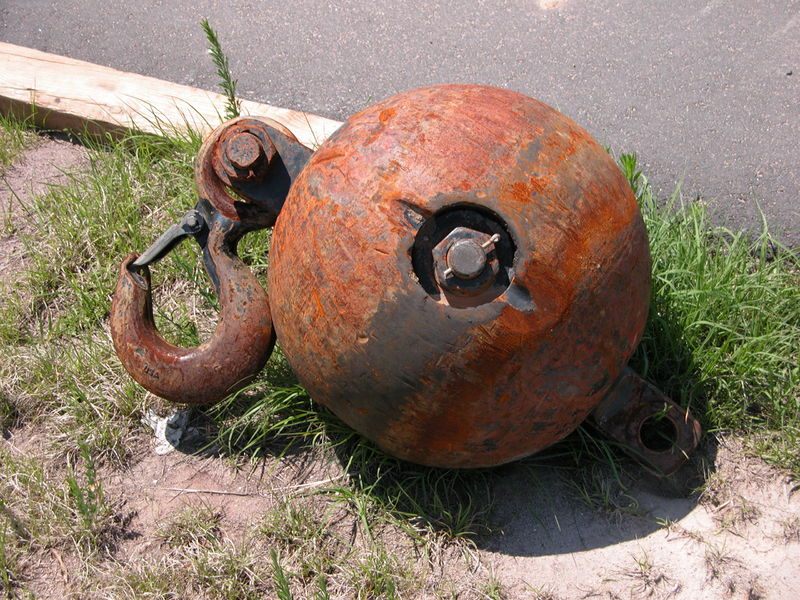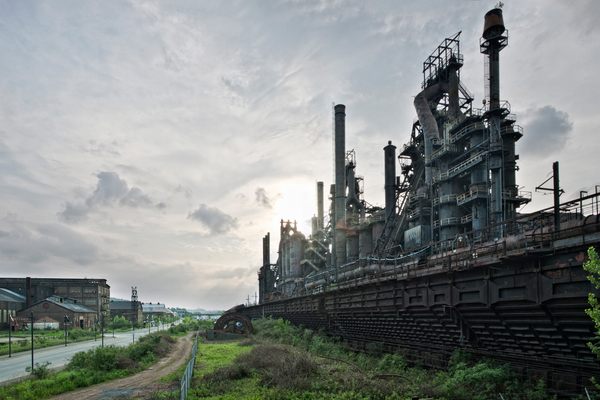The Indestructible Appeal of the Wrecking Ball

Great job, old friend. (Photo: Paul Goyette/Wikipedia)
When one thinks of demolishing a building, the image of a massive wrecking ball smashing through the structure is usually the first thing that comes to mind.

The wrecking ball is the quintessential symbol of demolition in the cultural consciousness, even acting as the logo of the National Demolition Association, but this classic building smasher is becoming rarer and rarer as the years go by. Construction forums have posts from former “ballers” lamenting the dying art of the wrecking ball, and they are a rare sight out in the world. In fact, a Flickr search for “wrecking ball” will pull up more images of Bruce Springsteen than construction equipment.
Though the spherical wall-slammer has been the industry standard for decades, you’re more likely to see a wrecking ball in a Miley Cyrus video than out on the streets, knocking down buildings, so why are we still so obsessed with this instrument of destruction?
It is unclear who first invented the wrecking ball. The simple pendulum device was likely innovated and refined over a number of variations before becoming the uniformly iconic device it is thought of as today. One of the earliest examples of wrecking ball demolition seems to be the breaking of the SS Great Eastern, in 1889. The massive iron ship was scuttled in the River Mersey and smashed to bits over the course of 18 months.
Once wrecking balls began being used to take down brick and concrete buildings, they proved to be an incredible innovation. Prior to the widespread use of the wrecking ball, most buildings were taken down by teams of workers known as “barmen,” who would take down structures using small tools and elbow grease. “It was really an era of hand tools,” says Jeff Byles, author of Rubble: Unearthing the History of Demolition, “[Barmen would] hoist crowbars and pickaxes. They would simply pry buildings apart with these hand tools. It was a brick-by-brick process.”

Ineffectiveness has never been the problem. (Photo: Bart Everson/Flickr)
This method of demolition (actually known as “deconstruction”) was laborious and costly but had the upside of salvaging building materials that could be reused in future construction. “I don’t think it’s widely appreciated that in the early 20th century, recycling building materials was quite an extensive practice,” says Byles, “There was an industry of salvaging and cleaning bricks, and putting them back to work. It’s too bad that we moved away from that.” But move away from it we did once demolition crews realized that a giant metal ball could take down a building much faster, and more importantly, much cheaper, than a crew of men using their hands.
The wrecking ball first became widespread in the 1940s, achieving peak ubiquity over the next two decades, becoming the industry standard, and invading the wider cultural consciousness. While there were variations to the equipment and design, the technology behind the wrecking ball has always been rather basic, or as Byles put it, “elemental.” A massive ball of forged steel weighing as much as 12,000 pounds is hung from a crane and swung into a building, letting inertia and gravity do the majority of the work. There are a few different methods of “balling”: the ball can be dragged back and released, letting it swing into the building; it can be hoisted to a great height and dropped; or the crane arm itself can be spun, whipping the ball at its target.
As a quick, cheap, and dirty method of taking down a building, the wrecking ball became the preferred method of demolition. “Large tracked vehicles such as cranes and excavators came on the scene, from which you could hang a wrecking ball.” says Byles. “You no longer had to pay a crew of barmen to spend all this time taking apart a structure piece by piece. That combination of factors, saving on labor costs, and the advent of technology really transformed the industry.”

Simply smashing. (Photo: Rhys A./Flickr)
But the smashing days of wrecking ball dominance were not to last. In the 1960s, the demolition landscape began to shift. While the wrecking ball was cheap and quick, it was also violent, and made a hell of a mess. Complicating matters, ever stricter regulatory processes clamped down on everything from the dust and asbestos that ball demolition would kick up, to the vibrations and impact noise. “Having a multi-ton hunk of metal swinging around on the end of a crane just came to be seen as unsafe,” says Byles. “The demolition industry as a whole had to adapt to stricter regulations. I don’t think they were happy about it when, throughout the 20th century, the ways of demolishing buildings came to be viewed by the government and other regulators as unsafe and hazardous.”
It was not just the ever more sensitive environmental concerns that contributed to the wrecking ball’s slow fade. In the latter half of the 20th century, new equipment, primarily hydraulic excavators (think one half of a backhoe), arrived. These new machines could take down buildings with a level of precision that the wrecking ball could never hope to achieve, making them much more attractive in the increasingly tight regulatory climate. “You could attach all kinds of different attachments to the ends of these excavating arms,” Byle says. “[They] could nibble away at buildings in a very controlled fashion.” Then there was explosive demolition and implosions that proved even faster than wrecking balls at taking down large structures.

Where have all the wrecking balls gone? Note: this is not a wrecking ball. (Photo: Ildar Sagdejev/Wikipedia)
Today wrecking balls are used only sparingly, and you would be hard pressed to find one on any construction site. Yet despite their slow fade into obscurity they remain one of the most common symbols of an industry that has all but left them in the dust. So why does the wrecking ball endure? “There is a romance to the wrecking ball. A kind of poetry to it,” says Byles. “During the 1950s and 60s, it was a time when demolition was associated with progress and optimism. It was an agent of opportunity for America, and for the world. There was a sense that we were making way for the future. I think the wrecking ball is proudly associated with that idea.”
Demolition in general seems to be transitioning back to a trend of deconstruction. Many structures are once again being laboriously taken apart to salvage used parts and collect the top artisanal prize of construction items, “reclaimed wood,” while other large demolition projects recycle the destroyed concrete for new buildings. No matter how brutally effective it may be, the wrecking ball may some day soon disappear entirely from wide use. But it will remain a powerful symbol of destruction, because who could elegantly sing a lyric like “You came in like a hydraulic excavator”?
Update, 1/7: An earlier version of this story incorrectly identified a crane hook and overhaul ball assembly as a wrecking ball. We regret the error.








Follow us on Twitter to get the latest on the world's hidden wonders.
Like us on Facebook to get the latest on the world's hidden wonders.
Follow us on Twitter Like us on Facebook